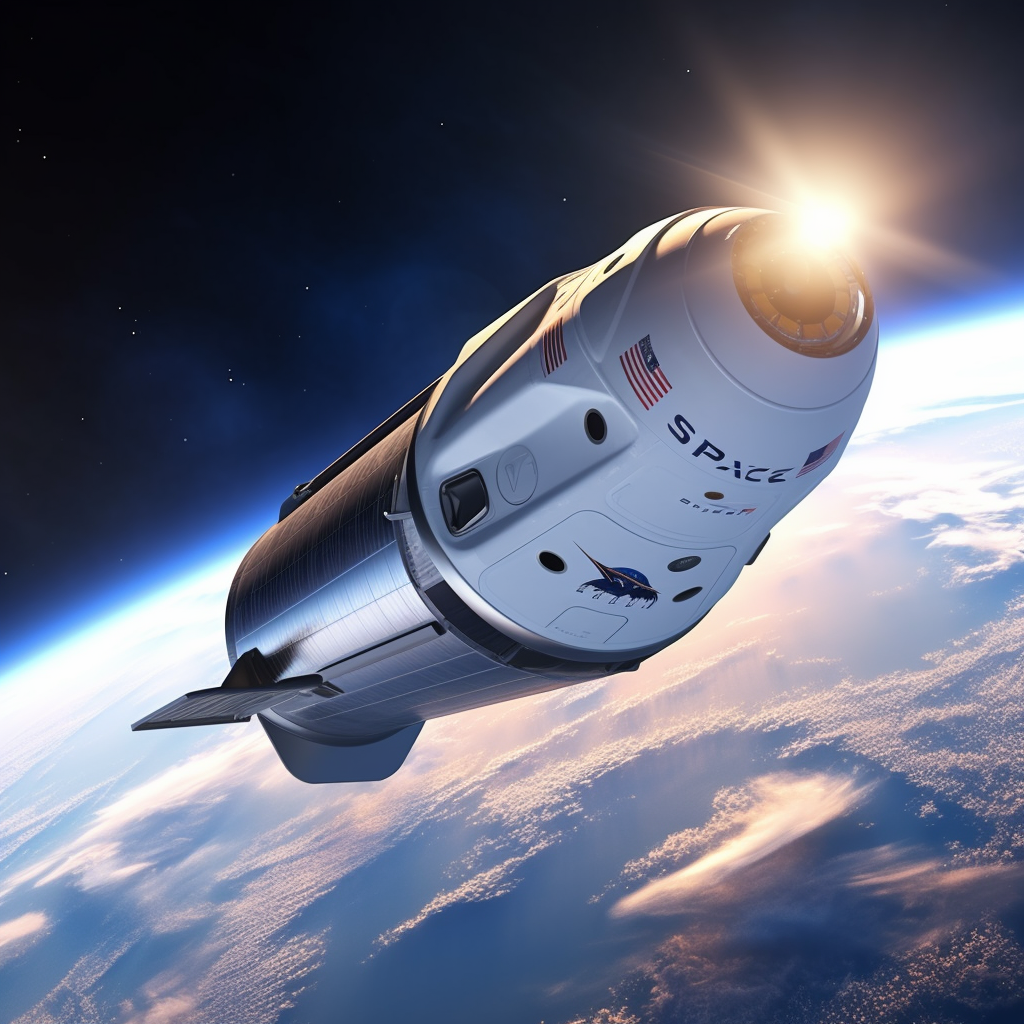Space travel has long captured the imagination of humankind, symbolizing our desire to explore the unknown and expand our horizons. In recent years, the landscape of space travel has undergone a profound transformation, with private companies like SpaceX and government agencies like NASA leading the way in pushing the boundaries of human space exploration. In this article, we will delve into the future of space travel, focusing on the ambitious plans and groundbreaking technologies being developed by SpaceX and NASA.
- SpaceX’s Mars Mission
Elon Musk’s SpaceX has set its sights on Mars, with the ultimate goal of establishing a self-sustaining human colony on the Red Planet. This audacious vision has fueled SpaceX’s development of the Starship spacecraft, a fully reusable vehicle designed to carry both crew and cargo to Mars and other destinations in the solar system. With its massive size, the Starship aims to enable the transportation of large numbers of people and resources, making interplanetary travel a reality.
SpaceX has been conducting numerous tests and iterations of the Starship prototype, pushing the boundaries of rocket technology. The company plans to achieve regular interplanetary missions to Mars within the next decade, with the goal of establishing a permanent settlement. This endeavor represents a significant leap forward in our quest for space exploration and colonization.
- NASA’s Artemis Program
Not to be outdone, NASA has its sights set on returning humans to the Moon through its Artemis program. Building on the successes of the Apollo missions, NASA plans to land astronauts, including the first woman, on the lunar surface by 2024. The Artemis program is a collaborative effort, with NASA partnering with international space agencies and commercial space companies to achieve this ambitious goal.
The Artemis program not only aims to establish a sustainable human presence on the Moon but also serves as a stepping stone for future deep space missions, including crewed missions to Mars. NASA’s Space Launch System (SLS) and Orion spacecraft will be the key components in transporting astronauts to the Moon and beyond. Additionally, NASA is investing in lunar technology, such as lunar rovers and habitat modules, to support extended stays on the lunar surface.
- Reusable Rockets and Commercial Spaceflight
Both SpaceX and NASA are pioneering the development of reusable rockets, revolutionizing the economics and accessibility of space travel. SpaceX’s Falcon 9 rocket has already demonstrated the ability to launch payloads into space and return to Earth for reuse, significantly reducing the cost of space missions. This breakthrough technology has paved the way for SpaceX’s ambitious plans, including the colonization of Mars.
In parallel, NASA has been working on its Space Launch System (SLS), a powerful rocket that will have the capability to transport astronauts and cargo to deep space destinations. The SLS, combined with the Orion spacecraft, will enable NASA to undertake complex missions beyond low-Earth orbit, including crewed missions to the Moon and potentially Mars.
Furthermore, the emergence of commercial spaceflight companies like Blue Origin and Virgin Galactic has opened up new opportunities for space tourism and private ventures. These companies are developing spacecraft that will allow private individuals to experience the thrill of space travel, albeit in suborbital or low-Earth orbit missions. While still in the early stages, commercial spaceflight represents a potential future where space travel becomes accessible to a broader audience.
- Lunar Gateway and International Collaboration
NASA’s Artemis program also includes the development of the Lunar Gateway, a small space station that will orbit the Moon. The Lunar Gateway will serve as a staging point for lunar surface missions, providing a hub for scientific research, technology development, and international collaboration. The Gateway will be a collaborative effort, with NASA partnering with international space agencies to establish a sustained human presence on the Moon.
International cooperation is a critical aspect of the future of space travel. Space agencies from around the world are pooling their resources and expertise to tackle the challenges of deep space exploration. Collaboration allows for shared costs, knowledge exchange, and a more holistic approach to space exploration, enabling us to achieve greater feats in our quest to unlock the mysteries of the universe.
- Space Tourism and Beyond
As space travel becomes more accessible, the prospect of space tourism is becoming a reality. Companies like Virgin Galactic and Blue Origin are working towards offering commercial suborbital flights, allowing individuals to experience the sensation of weightlessness and marvel at the beauty of Earth from space. While the price tag is currently high, advances in technology and economies of scale may make space tourism more affordable in the future, opening up new horizons for adventurous travelers.
Looking further ahead, the future of space travel may extend beyond our own solar system. Breakthrough initiatives like the Breakthrough Starshot project aim to send tiny spacecraft to the nearest star system, Alpha Centauri, using laser propulsion. This concept of interstellar travel raises exciting possibilities for exploring other star systems and potentially encountering extraterrestrial life.
The future of space travel is filled with bold visions, innovative technologies, and unprecedented collaboration. SpaceX’s Mars mission and NASA’s Artemis program are driving us closer to becoming a multiplanetary species and establishing a sustainable human presence on the Moon. Reusable rockets, commercial spaceflight, and international cooperation are transforming the landscape of space exploration.
As space travel becomes more accessible and affordable, the doors of opportunity open for space tourism, enabling individuals to experience the wonders of space firsthand. And as our knowledge and capabilities expand, the possibility of interstellar travel beckons, offering a glimpse into the vast expanse of the universe.
The future of space travel is a testament to our collective curiosity, resilience, and determination. Through the efforts of visionaries, scientists, engineers, and explorers, we are pushing the boundaries of what is possible and unlocking the mysteries of the cosmos. The journey ahead promises exciting discoveries, life-changing experiences, and the realization of humanity’s age-old dream of venturing into the great unknown.




